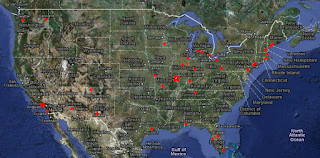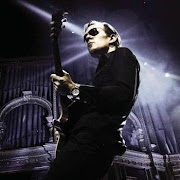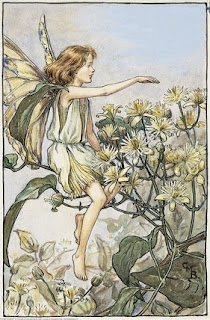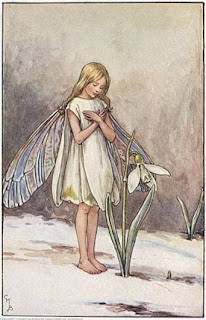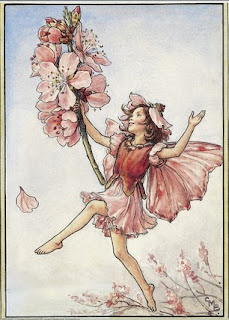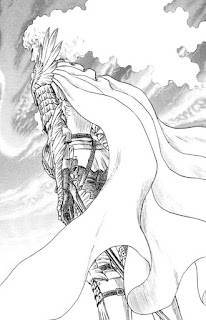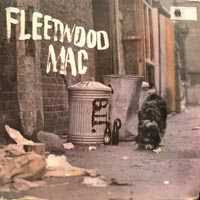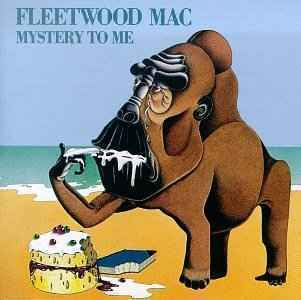In addition to
Mystery To Me, here are the CD's I got over the holidays (in no particular order), with a couple [hundred] words about each:

Stevie Ray Vaughan - Couldn't Stand The Weather [1984]
This is SRV's second studio album, following his debut Texas Flood. Both that album and this one are consistently good, serving up Stevie's trademark style of swinging Texas blues rock. The album kicks off with a short but impressive instrumental, Scuttle Buttin', which showcases Stevie's rapid fretting capabilities. The most radio-friendly tracks on this disc are the title track and Cold Shot, as well as the not-to-be-missed cover of Jimi Hendrix's Voodoo Chile (even if, in all fairness, I think Jimi's version is better). I also like the bluesy The Things (That) I Used To Do, but the standout track is the long slow burner Tin Pan Alley (aka Roughest Place In Town), whose praises I've sung elsewhere.

Harvey Mandel - The Snake [1972]
I really enjoy Harvey Mandel's music. He's a straight-up instrumentalist, who rarely bothers to add vocals to his songs (which is a-ok by me). He has experience playing the blues in Chicago - his path crossed that of Mike Bloomfield's on more than one occasion - and he had a stint in California blues band Canned Heat at the end of the sixties. But his solo material has a bit of a jazz flavor - that is, interesting guitar jazz, not that horn bullshit. His songs do have a tendency to melt together and blend into the background, but where others may count that as a negative, I consider it to be part of The Snake's charm. Oh, by the way, the title for this album borrows Harvey's nickname - the origin for which I've heard multiple stories, but I like to believe it has something to do with his fluid, "slithering", guitar lines. For example, in the track Bite The Electric Eel.

Gary Moore - Blues Alive (Live) [1993]
I'm a fan of Gary Moore. He's a good guitarist in the blues rock vein, but he's got more of a modern touch - and when I say "modern", I mean, like, from the blues revival of the eighties. He's got great technique, and he wouldn't sound out of place in the shredding hair metal scene, I guess. For blues purists that might be a sin, but hey, he's a fantastic guitarist. He's not my top favorite, but his chops are solid (though some argue that he's got more technique than soul), he's a lot of fun to listen to, and he's got great taste - he's covered Roy Buchanan,
and he's a dedicated devotee to Peter Green (to the point of having recorded an album of Peter Green covers, which he played on Peter Green's classic guitar, that he inherited).
This live set sounds great. Many good songs on here, including one of my favorites from Gary's catalog - Still Got The Blues. Albert Collins makes a guest appearance on Too Tired (a Collins song - though I'd rather it was Cold Cold Feeling, like on the DVD I got last year). Got some blues classics, including Further On Up The Road, Albert King's Oh Pretty Woman, and the perennial favorite, The Sky Is Crying. Parisienne Walkways is also worth mentioning, which is a beautiful song. The encore is one of my favorite Peter Green songs - Jumping At Shadows (disclaimer: Peter Green didn't actually write the song, his friend
Duster Bennett did, but his version is the one I am familiar with, and fond of). Peter of course does it better than Gary, but it's still really cool to hear someone else doing the song.

Neil Young & Crazy Horse - Re*Ac*Tor [1981]
Re*ac*tor is the Crazy Horse album following 1979's Rust Never Sleeps (which was half solo/acoustic); and if Rust Never Sleeps was the Everybody Knows This Is Nowhere of the seventies (vaguely speaking), then Re*ac*tor is akin to the Zuma of the eighties. It doesn't have any timeless radio hits, but it rocks, it's hard, and it's great for Crazy Horse fans such as myself. I would also classify it as a bit of a "road record", considering it has a lot of road-themed songs (Get Back On It, Southern Pacific, Motor City, Rapid Transit). The opening track, Opera Star, is a great one lyric-wise - although I don't usually pay much attention to lyrics. The 9+ minute jam on T-Bone, which has all of two lines ("got mashed potatoes, ain't got no t-bone") repeated to infinity, may not be the
best in Crazy Horse's long line of jam songs, but it's a good one. I'm also fond of the train song (Southern Pacific) and Rapid Transit, complete with its exaggeratedly stuttered vocals. But my favorite track on the album is probably the fierce closing number, Shots.

Albert King - Wednesday Night in San Francisco (Live) [1968]
This disc of tracks from a classic live Albert King concert (his first performance at the legendary Fillmore West, playing to a mostly hippie crowd) is actually one part of three separate releases, which also include Thursday Night, and the original Live Wire/Blues Power. To my understanding, Wednesday and Thursday night are just more performances from the same (two) concerts that the original live album Live Wire/Blues Power comes from. So, I probably should have gotten that one first, but for some reason (possibly the track list, possibly including songs I've heard on a web radio station), this is the one I asked for. I have no regrets, however. This is classic Albert King; and as much as I love and respect B.B. King (and I really do), I like this album more than B.B.'s more popular concert album Live at the Regal (from 1964). Wednesday Night contains a great (if short) tracklist, including two songs from Albert's popular Born Under A Bad Sign album from the previous year - the title track and Personal Manager - plus the classic Don't Throw Your Love On Me So Strong which Al Kooper and Mike Bloomfield adopted for their live shows in support of their Super Session project from the same year as this concert. And my favorite track on the set is the rousing blues, Got To Be Some Changes Made.

Cheap Trick - Cheap Trick [1977]
I'm not any kind of real big Cheap Trick fan. Dream Police and Surrender are fun songs, but I've never been fond of I Want You To Want Me, which is a piece of sap that gets so totally overplayed on rock radio that it's not even funny. I mean, does it even make sense that a rock radio station would take one look at a rock band and pick out the lightest, sappiest, boy bandiest song in their catalog and play it on endless repetition? Or maybe it's the fans' (or the non-fans') faults for making that song so damn popular. But it's apparent that Cheap Trick is not a band that is very adequately represented on corporate radio (at least not the Cheap Trick I know, which is the Cheap Trick that recorded this album). And, the bottom line? Cheap Trick's debut album rocks, hard. There's not a radio hit on this album (at least not one we still hear today), but I'd be hard pressed to choose a bad track off this record. There's a reason they originally named the sides "Side 1" and "Side A". With songs like Taxman, Mr. Thief and the wild opener ELO Kiddies, not to mention my favorites, the deliciously evil Daddy Should Have Stayed In High School ("I'm sorry, but I had to gag you") and The Ballad of TV Violence ("I need a gun to have me some fun"), this album delivers. The guitars are hard and the vocals rough. Forget that other song I Want You To Want Me, this album here is the product of a rock band.

Roy Buchanan - Roy Buchanan [1972]/Second Album [1973]
Roy Buchanan is one of my top favorite guitarists of all time. And he has been since the first I heard of him (via the ethereal The Messiah Will Come Again). His style is unique and emotive, his playing rough but delicate. He has total control over every note he plays. It only
took one song for me to know that he was one of the best that ever was. But even so, I was at first hesitant to put all the weight of my dedication behind him, simply because I hadn't heard a lot of what he had recorded (and you will never hear his songs - some of the best that were ever recorded - playing on the radio, I guarantee you that). Well that is slowly changing, and the more I listen to Roy Buchanan, the stronger my conviction is that he is one of the best of the best.
These two albums are his first "official" studio records, and they contain some slammin' tracks - my favorites being the instrumentals of course. On the first album, you've got the beautifully melodic Sweet Dreams, the country-tinged melancholy of I Am A Lonesome Fugitive (which is growing on me), the afore-mentioned (and unmatched - except by Roy's live versions, of course) The Messiah Will Come Again, the soulful John's Blues and Pete's Blue, and a couple others for the less heavy-hearted listeners. The second album features yet more instrumentals, including the impressive After Hours and I Won't Tell You No Lies, and the plodding Five String Blues (which actually has a few short vocals in the middle) - apparently that song was named so because Roy broke a string at some point but kept on playing. He clearly doesn't
need all six strings to impress. Treat Her Right has a little surf flavor to it, and Tribute To Elmore James (a bluesman hailed as the king of the slide) is self-explanatory. All in all, the showcase of these albums is Roy Buchanan's incredible talent, and for that these albums most certainly do not disappoint.

The Allman Brothers Band - Beginnings [1973]
Released as early as 1973, Beginnings actually contains both of the Allman Brothers Band's first two albums, their self-titled debut from 1969, and Idlewild South from 1970. Both of these albums contain top-notch music from one of the greatest jam rock bands of all time. You hear about Eat A Peach and Brothers And Sisters more often (and those are also both great albums), but think of these as the fresh, early, bluesy beginnings of the band - like Zep's first two albums, for example. Immortal songs found on these two albums include Dreams, Whipping Post, Revival, Midnight Rider, and In Memory of Elizabeth Reed, but the rest of the tracks are almost as good (and in some cases, just as good or better!). My favorite moment is when the first album kicks off with that intense one-two hit - the instrumental Don't Want You No More, which flows seamlessly into the brooding It's Not My Cross To Bear. The vocals on Hoochie Coochie Man on the second album, sung by bass guitarist Berry Oakley, sound so much like Johnny Winter that, until I looked it up, I was convinced that they had gotten Johnny to appear as a guest on that album!

Derek and the Dominos - The Layla Sessions [1970]
I've told the story a million times before - Layla & Other Assorted Love Songs is the album that came out of Eric Clapton's obsession and unrequited love for his best friend George Harrison's wife Patti Boyd. The album is tortured and romantic, and I count it as the best collection of love songs ever recorded. And unlike Clapton's other bands of the time - specifically, Cream and Blind Faith - which exploded due to creative differences, in Derek and the Dominos, the importance of the music rose above and beyond the individual members of the band. And that's saying a lot, considering the talent that was focused in that band. Aside from Clapton himself, legendary slide player of the Allman Brothers Band, Duane Allman joined in on the studio sessions. The result was (and still is) sublime.
The Layla Sessions collects the entire [I am to believe] studio sessions recorded while working on the Layla album. Which isn't actually a whole lot, beyond what made it onto the album. The Sessions is a three disc box set. One disc is a newly remixed version of the original album. Another is a collection of alternate takes - which is interesting, but I think 20+ minutes of Mean Old World (which is acoustic, and on the shorter side in terms of length) is a bit much. But the meat of the Sessions set is the Jams disc, which contains five instrumental jams: three featuring the core Dominos band; one with the addition of Duane Allman, forming the ultimate lineup that appears on the album; and one with the entire Allman Brothers Band sitting in with the Dominos. One thing that becomes apparent, listening to these jams - as good as they are - is how much the vocals add to the mood of the album. And this is coming from someone who often tunes out the vocals in a song!
